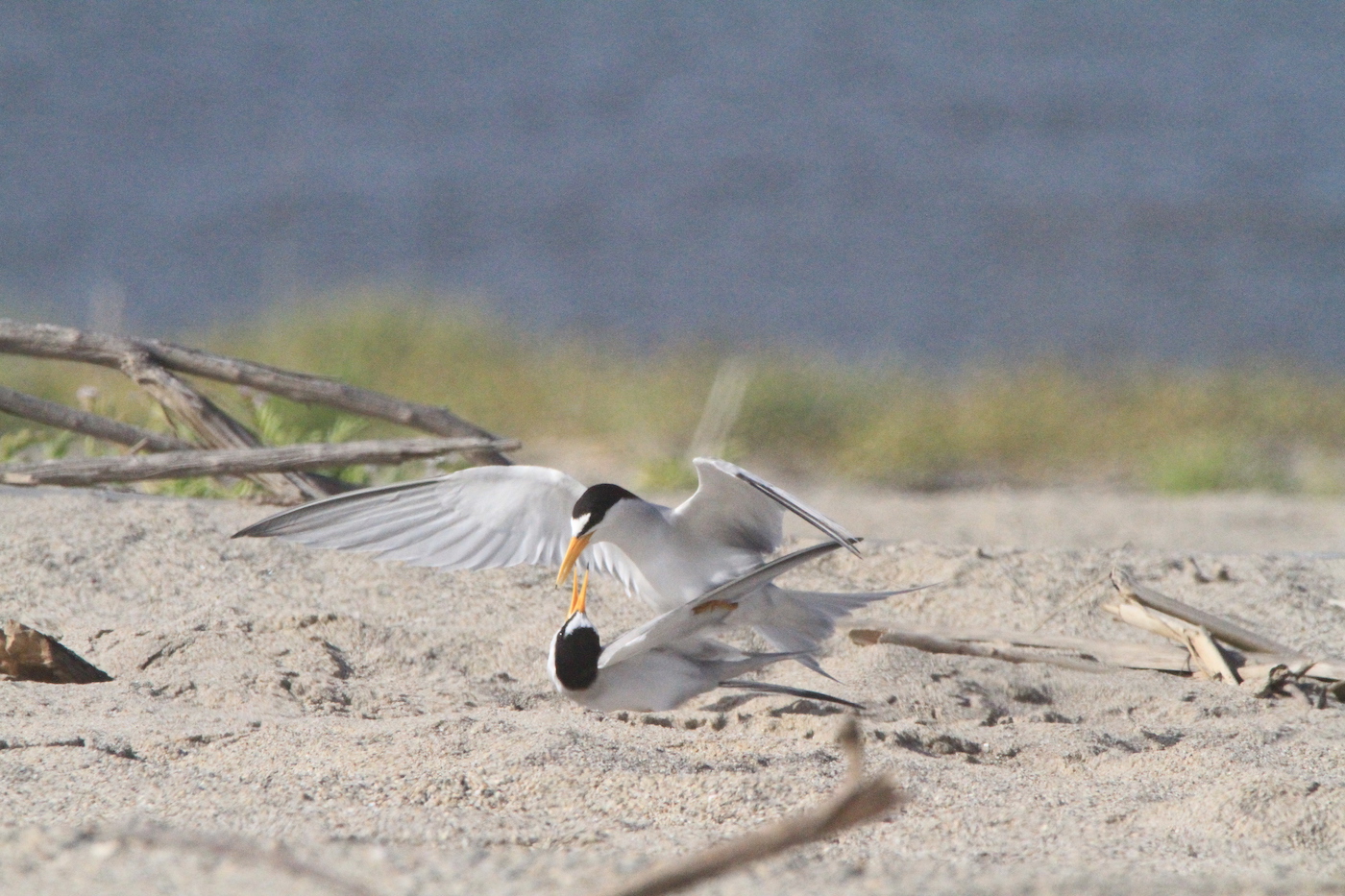The Nesting Ground

The Santa Clara River Estuary was a graveyard of tattered driftwood, tangled kelp balls, a rotting sea lion carcass that was so putrid it could only attract a pair of turkey vultures. A high ceiling of overcast kept the early morning comfortably cool. The sand was coarse and gritty, perfect for breeding and nesting western snowy plovers and especially California least terns.
There aren’t many places left along the California Coast where least terns can nest without disturbance. Locating them isn’t easy either. Scanning with my binoculars at a certain level was my best strategy. Standing on top of the berm was a mistake. Most animals, especially when they’re busy breeding, denning, nesting, and rearing young, don’t want to look up at a potential threat. They are easily spooked. Staying low is always the best option, but when it comes to least terns and a steep berm is involved, standing is simply fine.
The berm at the Santa Clara River Estuary grows gradually. The best scanning placed me at the bottom of the berm, so I was head level where least terns sunned themselves and plovers scampered after beach hoppers. The birds remained comfortable and they continued with their feeding, preening, breeding, tending to their unhatched eggs or hungry chicks.

California least terns are the smallest terns in North America. In California they are listed as endangered due to the usual suspects, habitat degradation, disturbances by dogs and people, so no big surprise there.
Mostly white with a black cap and a yellow beak, I typically heard their calls of kee-zink, kee-zink before spotting them, usually as they swooped along and hovered momentarily overhead. Without binoculars it was almost impossible to track them. Once they landed in the sand locating them became even more difficult. So I did a lot of waiting and watching. Seems like when I did that and patience took over, things came together in some form.

If parents weren’t busy trading out on incubating their eggs, then they were focused on making the next least terns. There’s a somewhat comical breeding ritual that involves the catch of the day, if you’re a least tern, that is. The male catches the small baitfish and brings it back to where hopefully at least one receptive female awaits. The male will circle a potential mate several times while holding the fish in his beak. If the female is receptive, she will take the fish and mating commences. Sometimes they mate while the male still holds onto the slippery fish. Somehow the whole ritual reminded me of a Seinfeld episode. It’s several weeks before the eggs hatch, and once they do activity ramps up.
I kept relocating the same chicks and watched them double and triple in size as the days progressed. I was impressed. When even just a few days old, they can gulp down a whole fish. At just a couple days old they are about the size of a 50-cent piece. The baitfish was longer than their minute bodies. Even at triple their own size it was still a monumental effort for them to choke a whole one down. I saw another chick ingest a fish that it couldn’t swallow, and it walked around with a portion of the fish sticking out of its beak for the entire morning.

I always knew when a parent came to feed its chicks. It would be calm with the chicks nestled in a natural depression in the sand, but once a parent flew in with fish, the chick’s demeanor changed immediately. Their tiny wings were extended and their mouths were agape as they stumbled across an obstacle course of windswept granules of coarse sand, cobble, decaying giant bladder kelp and splintered driftwood, just to reach their attentive parents and their catch.
By August, most least terns begin their return trip to South America, their fall and winter stomping grounds. By next spring, usually April, they come back to various beaches in California, the ones that may appear to be the least desirable, the beaches that appeared a little like they did 300 years ago.







